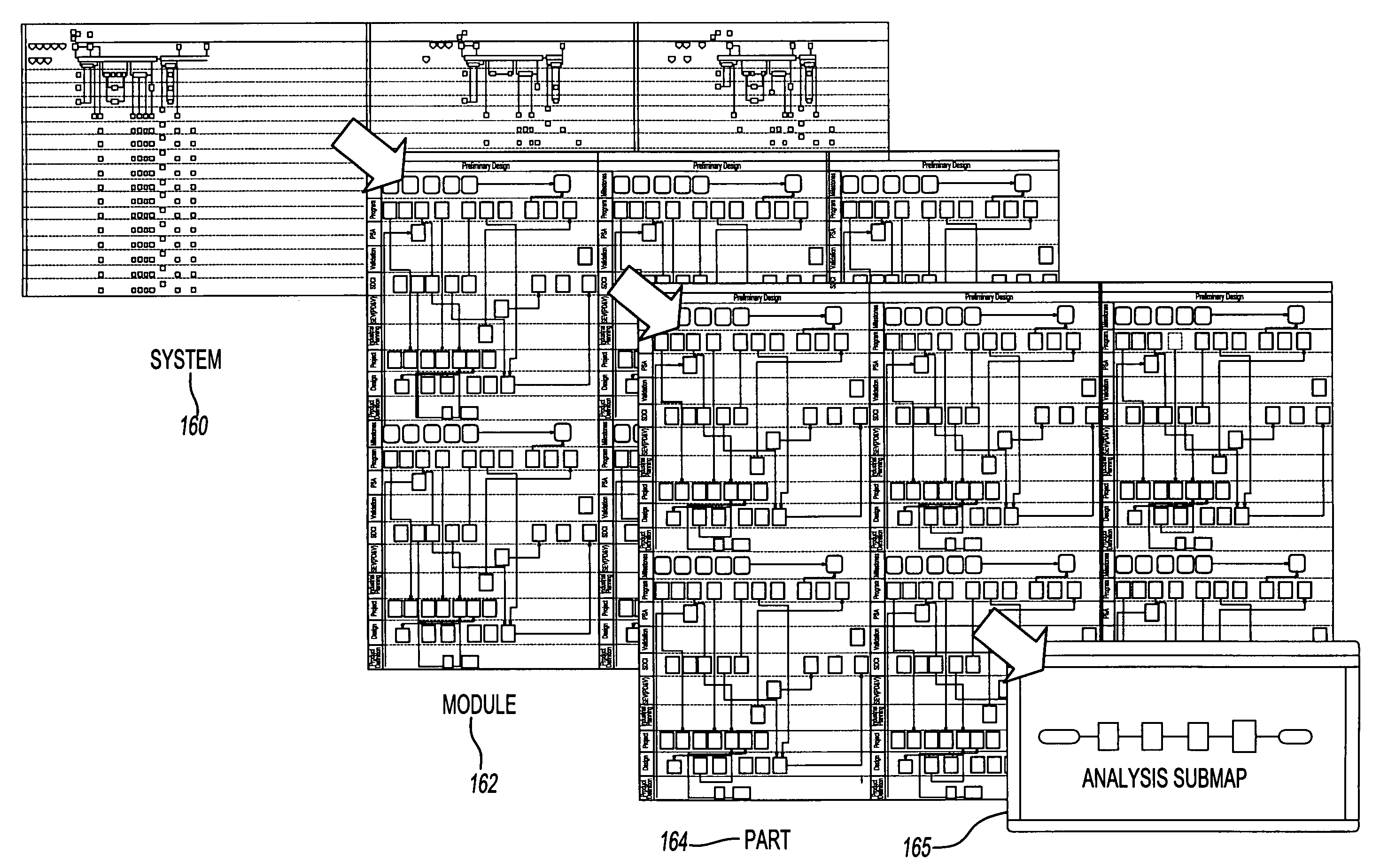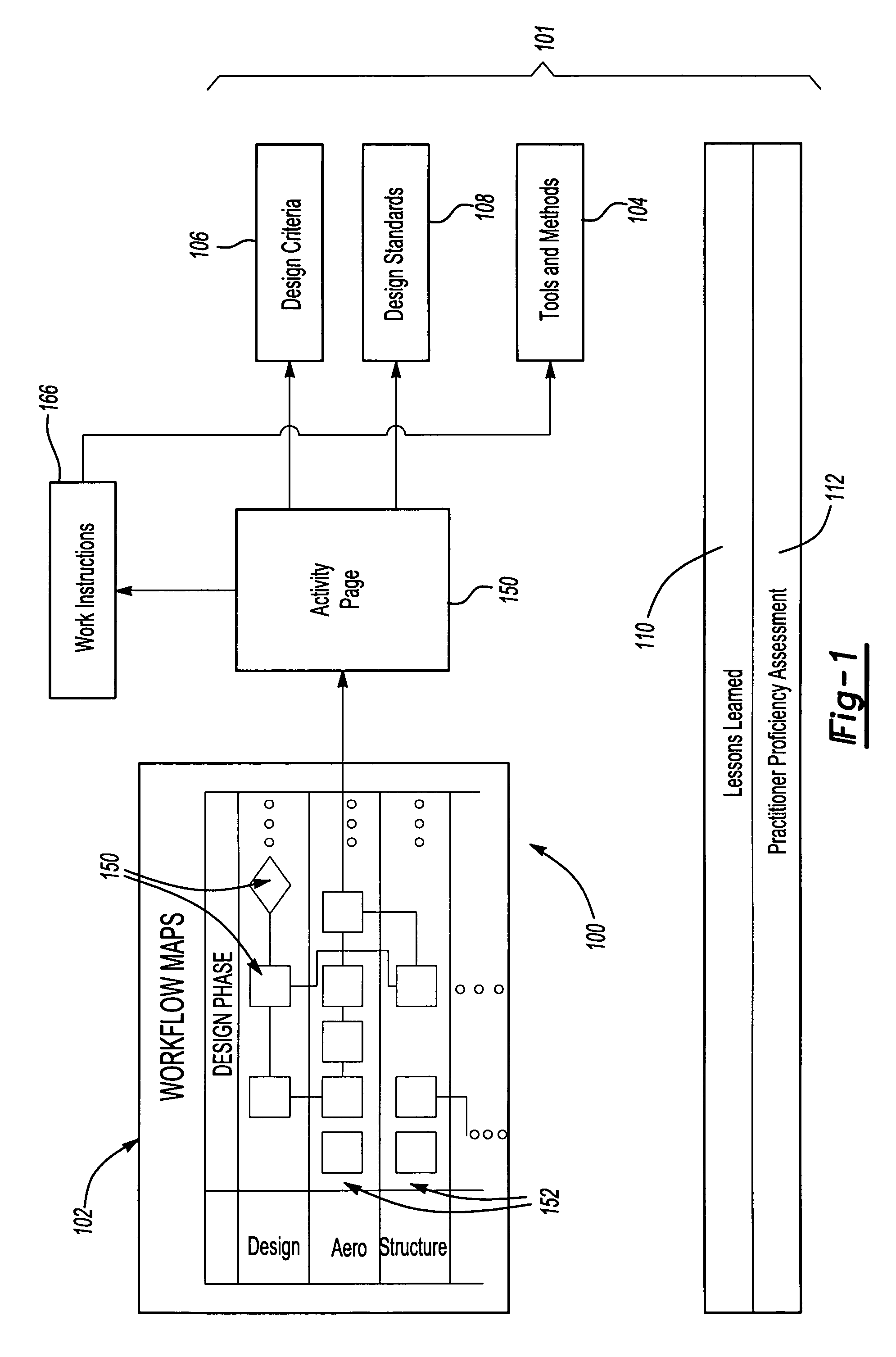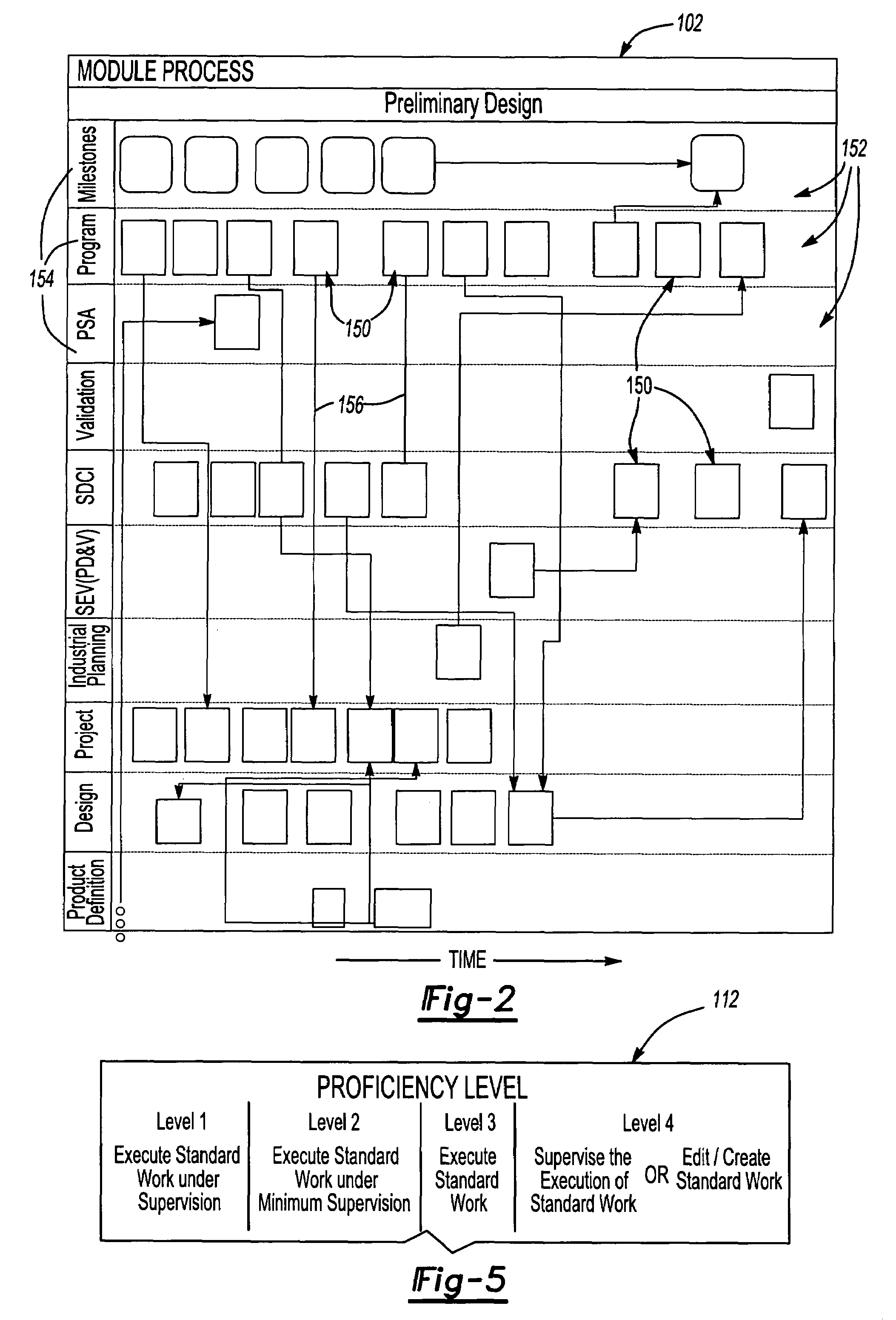Engineering standard work framework method and system
a work framework and work framework technology, applied in the field of work management systems, can solve the problems of wasting time and resources, no general framework that allows documentation of both project management and first-time process quality, and low yield of product development processes, so as to reduce the likelihood of costly mistakes and turnbacks, and facilitate the identification of improvement opportunities
- Summary
- Abstract
- Description
- Claims
- Application Information
AI Technical Summary
Benefits of technology
Problems solved by technology
Method used
Image
Examples
Embodiment Construction
[0017]Generally, a standard work process framework 100 according to the invention provides a structure to drive a complex project via process control. The framework 100 may include periodic gated reviews during the process in addition to inspection of an end result and can also provide a way to conduct controlled experimentation and improvement. The framework 100 also provides a structure for documenting designs that have worked before to provide a base for further experimentation with improvements. By providing clear, prescriptive details on the engineering tasks within a process (e.g., content, sequence, timing, information flow, dependences between activities, quality checks, etc.), the framework 100 makes it difficult to conceal shortcomings in engineer skills, methodologies, and / or causality between problems and outcome within unaccounted variations in the design process.
[0018]Referring to FIG. 1, the standard work framework 100 according to one embodiment of the invention may,...
PUM
 Login to View More
Login to View More Abstract
Description
Claims
Application Information
 Login to View More
Login to View More - R&D
- Intellectual Property
- Life Sciences
- Materials
- Tech Scout
- Unparalleled Data Quality
- Higher Quality Content
- 60% Fewer Hallucinations
Browse by: Latest US Patents, China's latest patents, Technical Efficacy Thesaurus, Application Domain, Technology Topic, Popular Technical Reports.
© 2025 PatSnap. All rights reserved.Legal|Privacy policy|Modern Slavery Act Transparency Statement|Sitemap|About US| Contact US: help@patsnap.com



